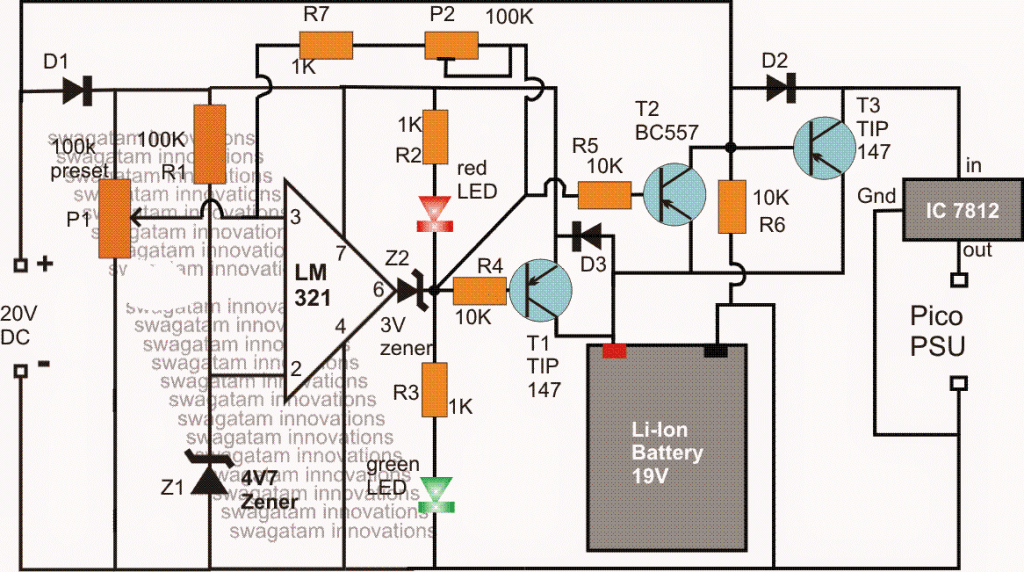In this post I have explained a simple ATX UPS circuit with an automatic charger for enabling an automatic changeover from mains to battery power during mains failures and for ensuring an uninterruptible operation of the ATX load.
Technical Specifications
I´m interested in your site and there are a lot good ideas. But for my actual idea I can´t find any solution and it´s driving me crazy. I want to make a ATX power supply with integrated UPS.
The idea is, to put a 230 to 19V power supply, a Li-Ion battery charger, a Li-Ion battery pack and a step-down converter for a picoPSU into a ATX power supply case.
The PicoPSU would be plugged outside of the case into a ATX connector, because the case is modular, also for the cables. So I´ve finished the board for all external connections (see attachment).
So, I need a two way power supply with 19V for the battery charger and 12V for the PicoPSU. The battery charger should be able to charge 4 or 8 batteries, 4 in a row and as an extension a pack of 4 parallel.
The voltage of the battery pack must be step down to 12V for the PicoPSU. Between those two 12V sources there must be a UPS function. Transistor or relay, doesn´t matter. The PicoPSU can be a up to 160 watts type.
My problems are the charger and the UPS function. Maybe you´re having an idea for a complete solution.
Thanks a lot

The Design
The requested ATX UPS circuit with charger can be implemented by using the above shown circuit, the details may be understood with the help of the following explanation:
The IC LM321 forms a standard comparator circuit stage and is positioned to monitor the battery voltage level and manage the cut-off actions for the set over-charge and low-charge thresholds appropriately.
The 20V input is obtained from a standard 20V/5amp AC to DC SMPS circuit, and the voltage is used for charging the attached 19V Li-ion battery via the LM321 charger controller circuit.
As long as this input is present, the battery is charged through T1, and when a full charge is reached, the opamp pin3 goes higher than its pin2 reference value (as preset by the pin3 100K resistor), illuminating the green LED and shutting off the red LED.
This prompts the output pin#6 to go high, disabling T1, which in turn cuts off the supply to the battery, preventing over charging of the battery.
Simultaneously. the 20V DC supply also finds its way to the Pico power supply unit via a dropping 12V regulator using the IC 7812.
The 20V supply input additionally used for keeping T3 disabled so that while the mains input is available, the battery voltage is unable to reach the Pico PSU
Now in an event when mains fails, the 20V input becomes eliminated and T3 is enabled to conduct.
The battery voltage is now instantly replaced for the mains input so that the pico power supply is able to get the supply without an interruption, or in other words, T3 executes the uninterruptible power supply action by quickly changing-over the supply from the mains to battery for the load each time mains power is disrupted.
During the mains failure, battery power is consumed by the load which causes the battery voltage to drop with time, and when it reaches the lower threshold (set by P2), the opamp output reverts to a low or a 0 volt.
This 0 volt also triggers the transistor T2 causing a positive potential is passed through its collector to the base of T3. This instantly disables T3 executing a low voltage cut off action and ensuring that no further power lose is caused for the battery, and a good battery condition is maintained throughout the ATX UPS operations.